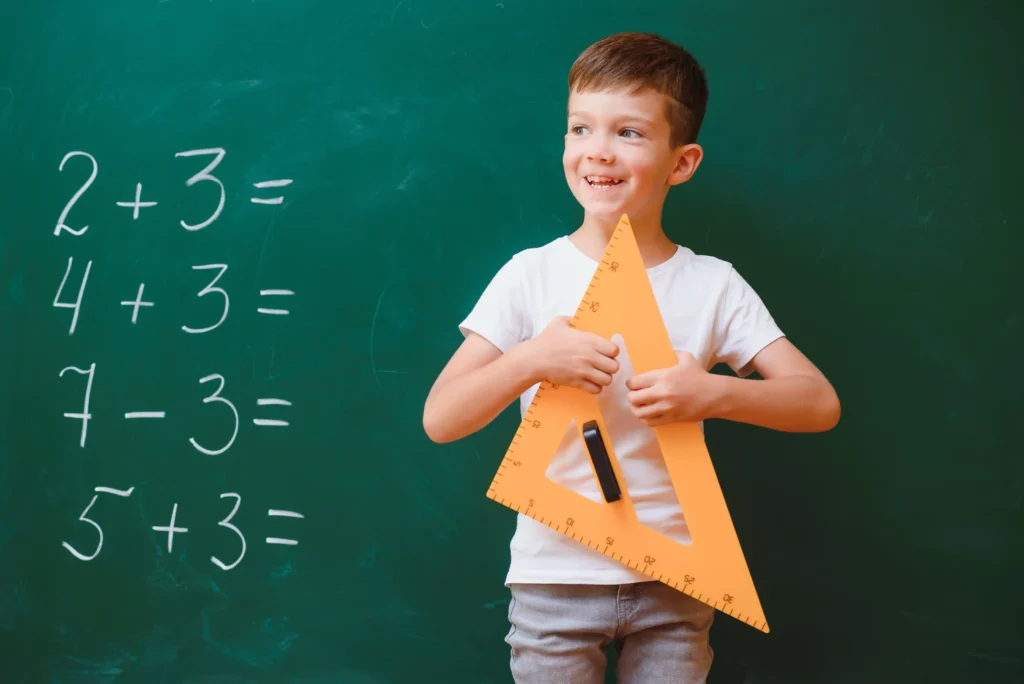2nd Grade Math
2nd grade math focuses on strengthening the basic skills children learned in their first school years. Students begin to explore more complex topics such as addition and subtraction with larger numbers, understanding place value, and simple multiplication. They also learn to tell time, read graphs, and recognize shapes. These lessons aim to build confidence and logical thinking while keeping learning enjoyable through games, puzzles, and real-life examples.
2nd grade math also supports deeper problem solving and reasoning skills through real life examples and interactive classroom activities. Students learn to connect math with daily routines such as shopping, cooking, or measuring distances. Teachers often use colorful charts, games, and group work to make lessons more engaging. As children explore word problems, they develop logical thinking and learn to explain their answers clearly. Regular practice helps improve focus, memory, and accuracy. By the end of this stage, students are better prepared to handle more advanced concepts with confidence and curiosity toward mathematics.
Second Grade Math
Second grade math represents a key point in a child’s learning development, where understanding replaces memorization. At this level, students start connecting basic arithmetic to logical reasoning and real-life applications. They learn the meaning of numbers through pattern recognition, sequencing, and grouping. Teachers often use multiplication worksheets for introducing the idea of repeated addition in an easy and visual way. By working with shapes, charts, and stories, students begin to see math as something they can use every day.
- Skip counting games using visual charts
- Word problems with simple multiplication ideas
- Pattern recognition with everyday objects
- Group-based activities that build teamwork
Addition remains at the heart of the curriculum, helping learners strengthen their number sense and build confidence in calculations. Lessons emphasize mental strategies, number bonds, and fact families, ensuring that children can recall basic facts quickly. Visual supports and practice sheets make lessons more dynamic and effective. By combining repetition with creative exercises, students learn to approach math as an enjoyable, problem-solving challenge. As their confidence grows, they develop the critical thinking and attention to detail that will guide them in higher grades.

2nd Grade Math Worksheets
2nd grade math worksheets help children reinforce what they learn in class through consistent practice. These sheets guide them from basic addition and subtraction to slightly more complex problem-solving steps. Many addition and subtraction worksheets pdf include illustrations, number grids, and simple word problems that make exercises engaging. Worksheets allow children to work independently or with parental help, creating a structured learning habit that strengthens focus and memory.
- Daily practice pages with step-by-step examples
- Number puzzles that encourage logical thinking
- Fill-in-the-blank problems to test understanding
- Mini challenges that reward accuracy and effort
Following the common core standards, these worksheets ensure that students learn essential math skills in a gradual and systematic way. Each sheet builds on previous lessons, helping children review and apply their knowledge consistently. The variety of exercises prevents boredom and keeps learning exciting. Over time, students gain fluency in computation and confidence in solving word problems, laying a strong foundation for future mathematical success.
2nd Grade Math Problems
2nd grade math problems encourage children to think critically and apply their knowledge in everyday situations. Each problem is designed to make students reason through the process rather than guess answers.
With addition worksheet activities, learners revisit basic arithmetic facts in new and practical contexts such as shopping, cooking, or measuring. Teachers often use stories and visuals to help students understand what the question is asking, leading to clearer and more confident answers.
As learners progress, they encounter regrouping, which teaches them to carry and borrow numbers in multi-digit addition and subtraction. This skill strengthens their grasp of place value and precision in computation. Through consistent problem-solving practice, students develop patience, focus, and creativity. Over time, they begin to enjoy tackling challenges, viewing math not as a task to finish but as a puzzle to explore and understand.
